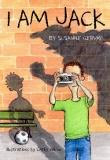I "met" Vickie Britton through a marketing
listserv for mystery writers. Since I love mysteries and history, especially
ancient Egypt, I had to grab a copy of The
Curse of Senmut, a mystery she wrote with her sister. And they have others
involving the Maya and Inca as well! So many wonderful books, so little free
time. Vickie and Loretta also have one e-book on the craft of writing, Fiction: From Writing to Publication (available
on Amazon
or Smashwords) and
one focused on mystery novels, Writing and Selling a
Mystery Novel: A Simple Step-by Step Plan, available on Smashwords. Here
they share some advice on The Relationship Between Plot and Setting
A good setting works hand in hand with plot, for like the scenes of a
movie or the props for a play, it establishes the necessary background for the
action and the success of your story. Below
is an excerpt from our ebook Fiction: From Writing to Publication.
Developing a
setting is very important to a novel for it adds flavor and color to the book.
Many times a novel is begun because of the author’s interest in a particular
setting. Because of this, a sense of place emerges naturally from what is known
and understood. Often writers select their home towns, states and countries
where they have lived or visited, or one where they want to go. If this place
is significant to the writer, it will show in the work. What would Tony
Hillerman’s novels be without the canyons and small towns of New
Mexico, or Willa Cather’s without the Nebraska prairie?
In The
Bridges of Madison County, author Robert James Waller wrote so convincingly
about the area that readers actually went in search of the covered bridge
mentioned in his story, even though the bridge itself is fictional.
While it is
the best policy to travel to your settings, you can portray a good setting with
proper research. Say you want to set your book in China. Sometimes it’s just not
possible to have an extended stay in China, although a ten-day trip
might be within your budget. But if it’s not possible to travel to your chosen
setting at all except in your mind, the Internet and the library become your
new best friends.
Pictures,
written narratives, websites with shots of the area can give you a feel for the
setting without actually traveling to the location. The Internet, especially,
has become a good source for viewing remote areas through specialized maps and
photographs, providing details that were once not possible without an actual
visit.... Whether your books are set on the Sioux Reservation in South Dakota
or in an English village, a strong setting will often draw and hold readers. A
story can be set in a big city, a small town, or just about anywhere in
between, but it is always of great importance. Your job as an author is to
create a good setting and make sure it is in harmony with the characters you
are creating. [End excerpt.]
What works
best for us is to personally visit every setting for our stories, to get a
feeling for the location. Sometimes we may change certain details such as
making up our own towns, rivers, mountains, etc, but they are always in keeping
with what might be found in the actual area.
Here are
some examples of how some of our plots have developed from our own experience
with travel and personal interests. Ardis Cole, in our Ardis Cole Mystery
Series, is an archaeologist who travels the world and runs into a crime in
every different place. The plots for these novels were actually formed from the
settings. For instance, in The
Curse of Senmut a tomb is located which is believed to belong to
Senmut, Queen Hatshepsut’s scribe and lover, and in Unmarked
Grave a skull is found on the grounds of an ancient castle in Scotland,
one that we visited.
When Vickie
lived in Laramie, Wyoming, we became drawn to the Old West,
the legends and rough terrain. From this love grew our High Country Mystery
Series, The Luck of the Draw Western Series, and the Western single Death Comes in Pairs.
An authentic
setting will draw the reader into the story and give them a sense of actually
being there.
Biography: Loretta Jackson and Vickie Britton are sisters
and co-authors of forty-three novels and numerous short stories, mostly mysteries
and westerns.
Loretta lives
in Junction City, Kansas,
and Vickie in Hutchinson, Kansas. Loretta taught school at the Pine
Ridge Indian Reservation in South Dakota while
Vickie was living in Laramie,
Wyoming. There they became interested
in the legends and history of the Old West.









